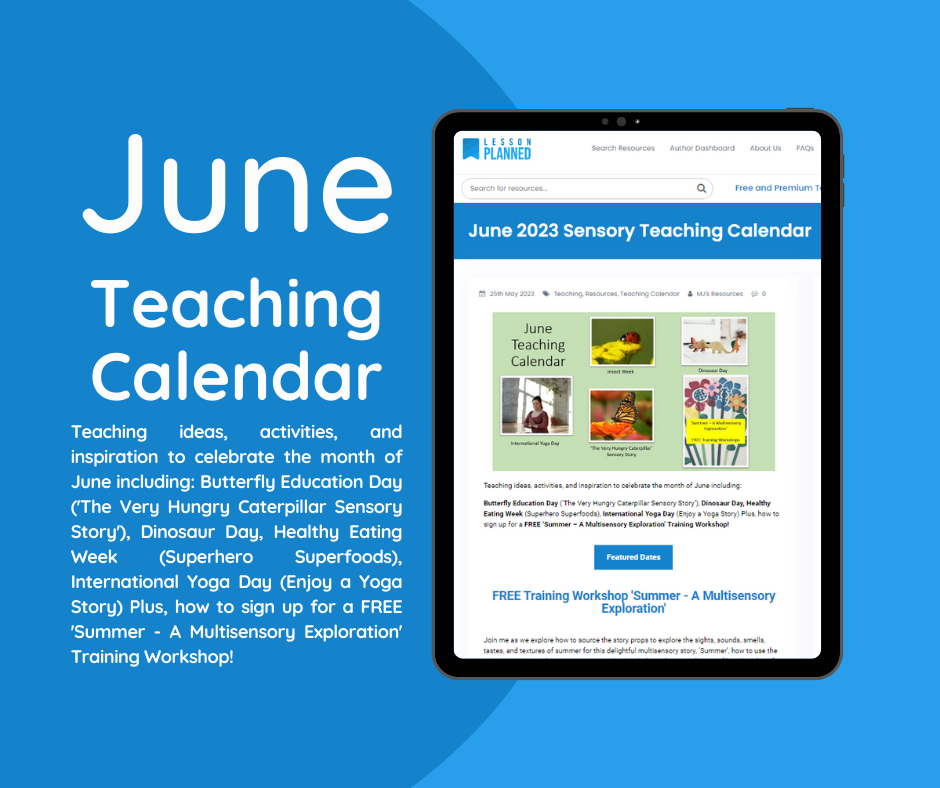- 26th May 2023
- Teaching Calendar, Teaching, Resources
- MJ's Resources
- 0
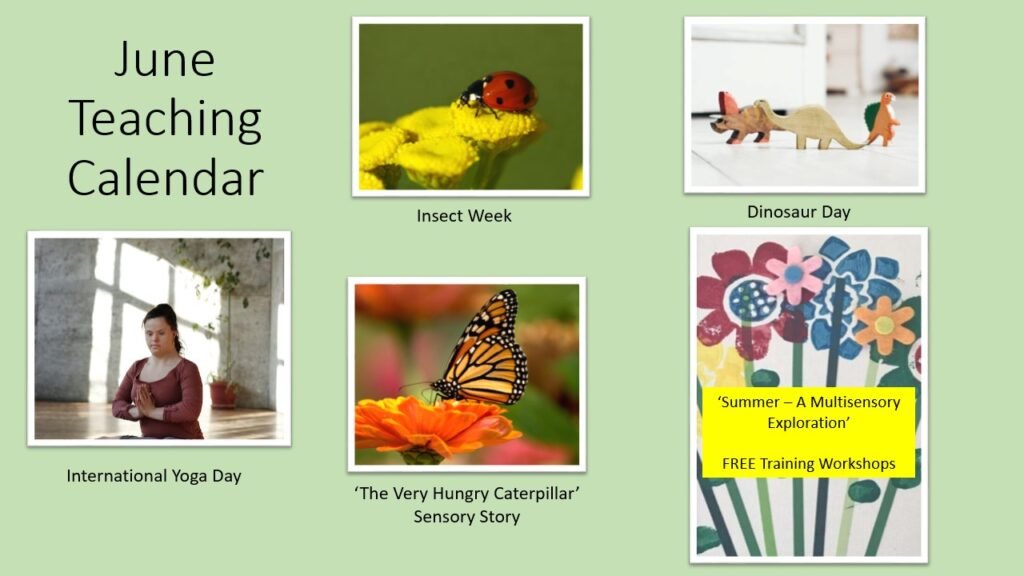
Teaching ideas, activities, and inspiration to celebrate the month of June including:
Butterfly Education Day (‘The Very Hungry Caterpillar Sensory Story’), Dinosaur Day, Healthy Eating Week (Superhero Superfoods), International Yoga Day (Enjoy a Yoga Story) Plus, how to sign up for a FREE ‘Summer – A Multisensory Exploration’ Training Workshop!
Featured Dates
Featured
June 1st – Dinosaur Day
June 3rd – Butterfly Education & Awareness Day
June 12th -15th Healthy Eating Week
June 15th 4pm – ‘Summer – A Multisensory Exploration’ Training Workshop
June 19th 3.30pm – ‘Summer – A Multisensory Exploration’ Training Workshop
June 20th – 26th Insect Week
June 21st – International Yoga Day
June 21st – Summer Solstice
June 21st – ‘Summer – A Multisensory Exploration’ Training Workshop
June 29th – July 19th – Children’s Art Week
FREE Training Workshop 'Summer - A Multisensory Exploration'
Join me as we explore how to source the story props to explore the sights, sounds, smells, tastes, and textures of summer for this delightful multisensory story, ‘Summer’, how to use the story props as a tool to promote communication, independence, and areas of learning plus of summer themed sensory ideas and activities.
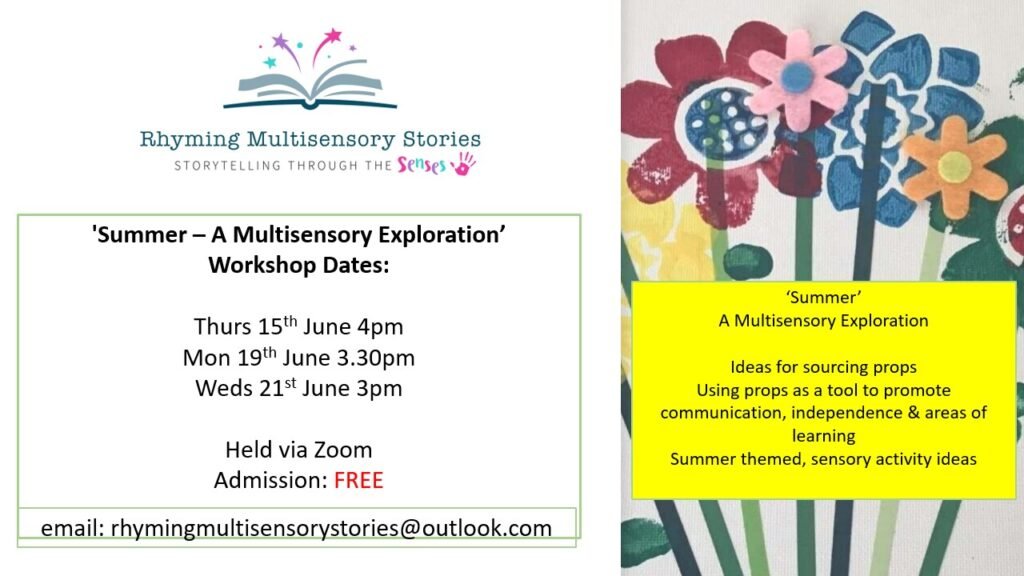
Dates: Thurs 15th June 4pm Mon 19th June 3.30pm Weds 21st June 3pm
Held via Zoom
Session Run Time: 30 mins Admission: FREE to all
To book your slot email: rhymingmultisensorystories@outlook.com send a message via the Chat feature on the website www.rhymingmultisensorystories.com or send a message via social media.
*Subscribers to the Members Library have been emailed personal invitations to the live sessions and will also be able to access the recording in the library prior to the live sessions.
June 1st | Dinosaur Day
Frozen Dinosaur Eggs

Frozen Dinosaur Eggs
You will need
- Toy dinosaurs
- Balloons
- Water
- Access to a freezer
Method:
- Place a toy dinosaur inside a deflated balloon.
- Fill the balloon with water, secure with a knot.
- Place in the freezer to freeze.
- Pop the balloon and remove the rubber.
- Present for sensory exploration.
Ideas
- Can the student explore the dinosaur egg using a torch and a magnifying glass?
- Can the student retrieve the dinosaur by pouring warm water on the ‘egg’?
Click on the image above to find out more.
Dinosaur Dig

Dinosaur Dig
This sensory play engages the senses, fine motor skills as the student manipulates the objects, problem-solving through experimentation, and creativity & imagination through exploration.
You will need
- Box/Tuff Tray
- Sand/soil/stones/pebbles/twigs/leaves/grass (for a less mess option replace the sand/soil with dried pulses, barley/lentils and/or dried beans)
- Toy dinosaurs/cotton wool buds (bones), shells (fossils)
- Items to promote fine motor skills: lidded containers (for storing your finds) paintbrushes (assorted sizes), a sieve for sifting the sand/soil/pulses, spoons, a toothbrush, scoops, and a jug of water.
- Items to promote scientific investigation: camera, magnifying glass, notebook, and a pencil (for recording findings), ruler, torch
- Bury pinecones and pine branches (pine trees were around in pre-historic times!)
Tip: Take learning outdoors and re-create your archaeological dig in the sandpit. (If you do not have a sandpit then a tomato grow bag is a good alternative)
Tip: Replace the sand with taste safe ‘sand’ by mixing flour, crushed cereal (Rice Krispies or Cornflakes are ideal!) and adding a little water to reach your preferred consistency. Option to add spices (cinnamon will give an authentic soil brown colour)
Encourage the students to use the tools to unearth treasure and record their findings
Extend Learning
Add items not found in prehistoric times e.g., coins, dice, a Lego brick, a toy car, a stainless steel or plastic spoon
Can the student recognise these items as being the red herrings?
(SALT) Promote Functional Language
Can the student name the item?
Can the student tell you what the item is used for? If the student is unsure then provide plenty of clues.
Can the student tell you why they think the item would not have been invented in prehistoric times?
Click on the image above to find out more.
June 3rd | Butterfly Education & Awareness Day (BEAD)
The Very Hungry Caterpillar Sensory Story

The Very Hungry Caterpillar Sensory Story
Based on the book by Eric Carle, this activity connects students to literature and engages the senses providing the opportunity for students to explore and express their likes, dislikes and sensory preferences giving them a voice and a choice.
You will need:
- Torch
- Leaf
- Egg (Pop a drop of glue on the leaf then leave to dry)
- Red and green pipe cleaners
- Apple
- Pear
- Plum
- Strawberries
- Oranges
- ‘The Very Hungry Caterpillar’ book by Eric Carle
Read: ‘The Very Hungry Caterpillar’ story by Eric Carle presenting the props/sensory stimuli as they appear in the story.
- The Leaf: Dim the lights then shine the torch onto the leaf. Can the students find the egg? Explore cause and effect, can the students use turn the torch ON/OFF independently?
- The Caterpillar: Promote fine motor skills. Can the students twist red and green pipe cleaners to make a caterpillar?
- The Fruit: Engage the senses and explore likes, dislikes and sensory preferences. Offer the apples, pears, plums, strawberries and oranges for the students to touch, smell and taste. Can the students choose between two preferred items? Can the students make a rejection if they do not like any of the items?
- The Other Foods: Print out and laminate a matching board with the chocolate cake, ice cream, Swiss cheese, salami, lollipop, cherry pie, sausage, melon, and a cupcake. Print out a set of matching pictures. Can the students match the correct picture to the one on the matching board?
- The Lettuce Leaf: Present lettuce leaves for the students to touch, smell and taste.
Tip: A mixed bag of salad presents a range of coclours, tastes and textures for the student to explore.
Discuss healthy eating. Can the students group the food items into healthy foods and foods you would eat as a treat? (Link to ‘Healthy Eating Week 12th-15th June)
- The Cocoon: Can the students climb into a sleeping bag or stretch in a body sock like the caterpillar?
- The Butterfly: Open a parachute and move it up and down slowly like the wings of a butterfly.
Click on the image above to find out more.
Parachute Game

Parachute Game
- Place plastic fruits on the parachute.
- Can the students keep the fruit on the parachute as it is lifted up and down?
- If the fruits drop, can the students catch and name them.
Extend Learning:
Can the students retell the story using the props?
Click on the image above to find out more.
Fruit Kebabs
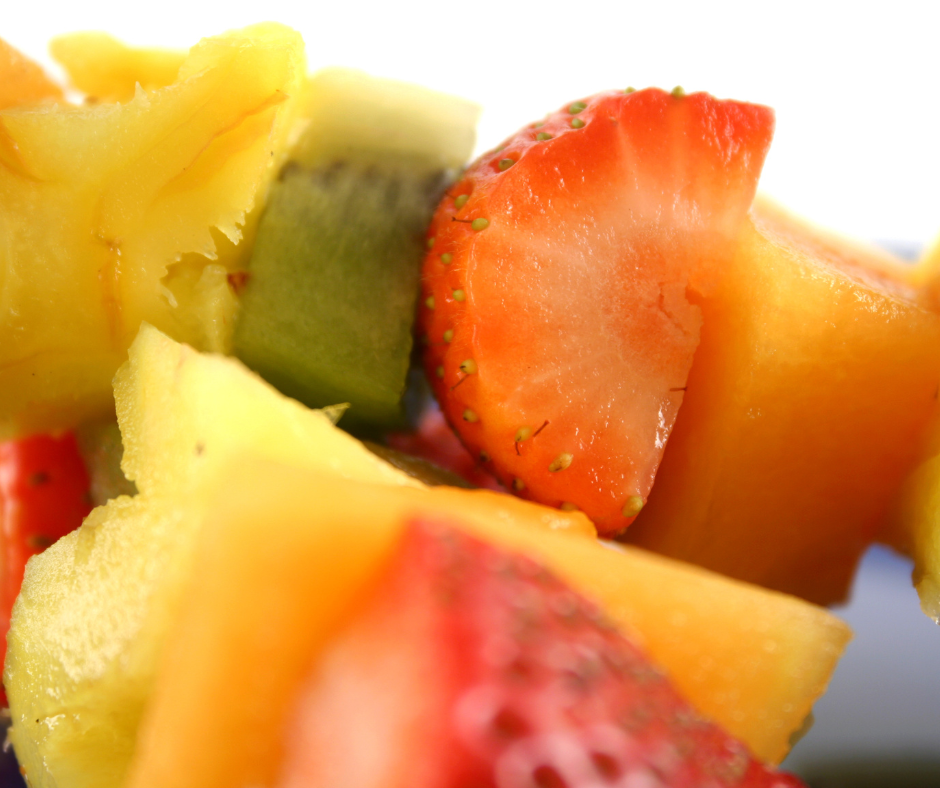
Fruit Kebabs
Can the students make a fruit kebab containing the correct quantities of fruit as they appear in the story? (One apple, two (pieces of) pear, three (pieces of) plums, four strawberries, five (pieces of) oranges?
Health & Safety Guidance
- Be Allergy Aware
- Beware of Potential Choking Hazards (remove pips/stones/seeds)
Click on the image above to find out more.
Non-Food Activity

Non-Food Activity
Read the story then explore dried fruit peel, scented body lotions/creams and/or essential oils.
Can the student show a preference for a scent or make a rejection if they do not like a scent?
Guidance: When working with scents, start at a distance and work your way towards the student taking their lead as to some individuals, smells may be overpowering.
Click on the image above to find out more.
Plant a Butterfly Garden
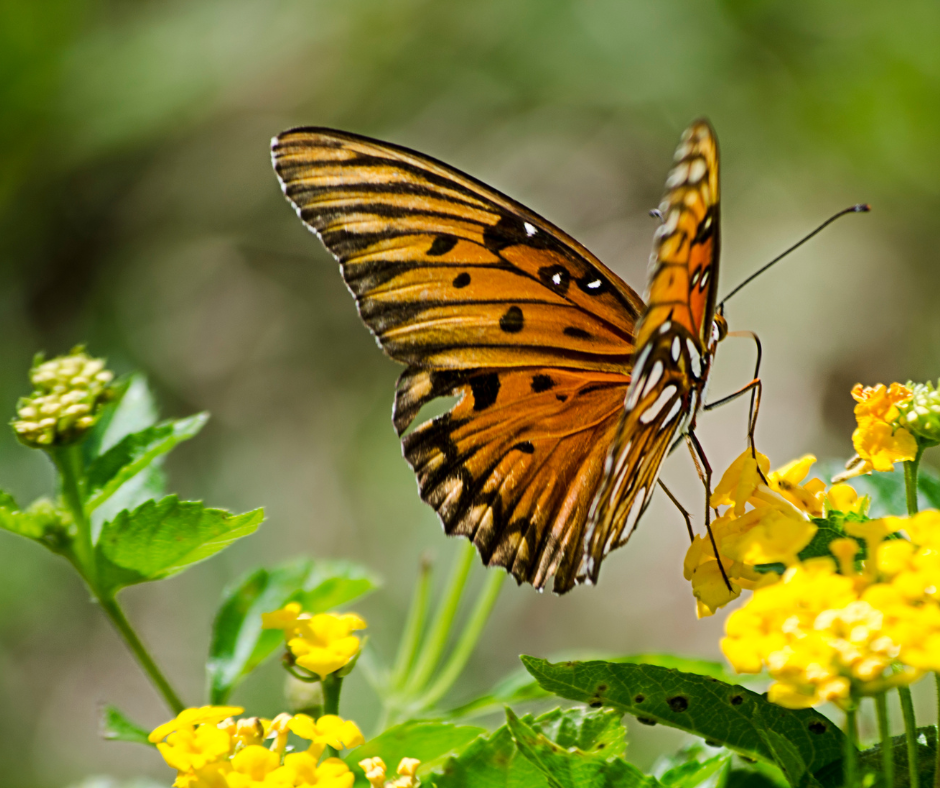
Plant a Butterfly Garden
You will need:
- Bowl
- Wildflower seeds
- Tissue paper
- Water
- Spoon
Method
- Tear or cut the tissue paper into tiny pieces and place into the bowl.
- Add the wildflower seeds.
- Mix using a spoon or your hands.
- Add a little water to bind.
- Roll into balls.
- Leave to dry on a sunny windowsill.
- Throw or plant into the garden/outdoor area.
- Watch as your garden/outdoor area transforms into a carpet of colour!
- At the end of summer, harvest the dried seeds and store in a paper bag ready to plant next year!
Explore the life cycle of a butterfly
If you have a class budget, purchase a butterfly growing kit. Raise and feed your own butterflies watching them transform from caterpillars to adult butterflies before releasing into the wild.
Click on the image above to find out more.
On this Day in History | 3rd June 1965
Astronaut Ed White became the first American to conduct a spacewalk.
Walking on the Moon Activity

Walking on the Moon Activity
This activity will build strength, balance and promote physical development and can take place in the classroom, outdoor area or in the PE hall as part of a PE session.
Create a moonscape adventure obstacle course using PE equipment.
- Crawl through the tunnels of the rocket: Tunnel/blanket/scramble net.
- Descend the rocket steps: Steps/balance beam/balance bar.
- Follow the footprints of aliens: Throw down feet/stilts/giant foam feet/stompers.
- Navigate moon rocks: Lay a sensory pathway using hula hoops/balance steps/’River Stones’/stepping logs.
- Take a ride on a moon buggy: Scooter board/balance board/’Saturn Skippers’, space hopper
- See how high you can bounce on the moon: Trampoline/mini trampoline/space hopper
- Catch the floating picnic items: Place plastic/toy food (fruit/paper plates etc) on a parachute, waft upwards to make the fruit float then catch the fruit in the parachute as it lands.
Tip! Create a space landscape in your soft playroom.
Place black material on the floor to represent space or a black hole then make an obstacle course by placing foam wedges/rockers/gym mats/balance balls/beanbags/pillows/cushions around the room. Can the students navigate their way through space in their rocket over the soft play equipment avoiding falling into the black hole?
Can the students make their movements slow and bouncy taking large, slow leaps around the room like an astronaut?
Idea!
Play space music or space sound effects (e.g., space shuttle launch, cargo door closing, engines roaring, fans, mission control countdown from ten, radio waves, windstorm, beep, drone, matrix, ambient space sound) in the background.
Take Learning Outdoors
If you have outdoor play equipment/climbing wall/frame create a story around the equipment e.g., climbing the ladders to descend the rocket then re-create a spacewalk using the play equipment.
Have a budget?
Consider purchasing a set of Sound Steps. These are foam stepping-stones that play sound recordings (up to 30 seconds) when you step on them. Perfect for your sensory adventures!
Click on the image above to find out more.
12th - 15th June | Healthy Eating Week
Explore Superhero Superfoods
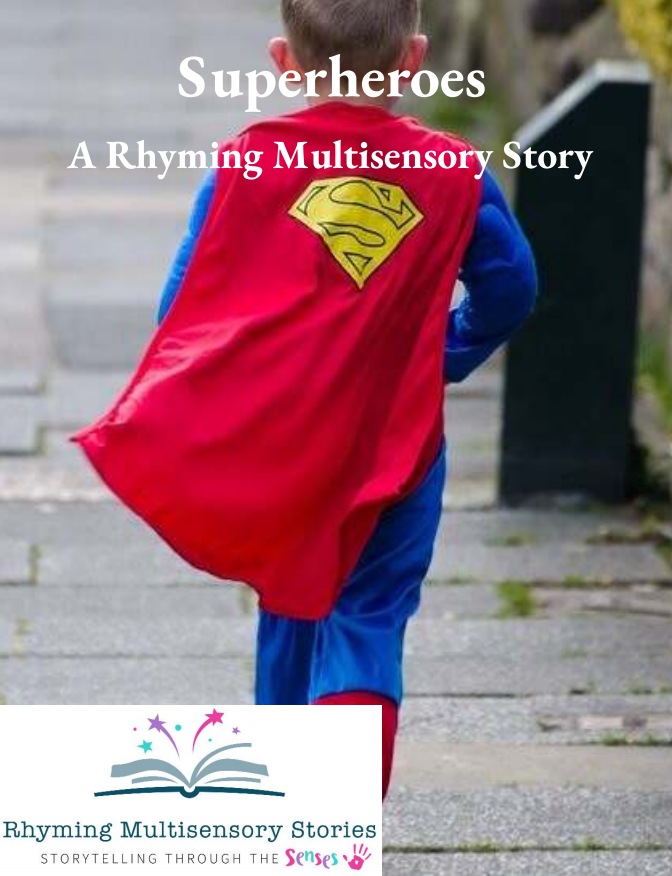
Explore Superhero Superfoods
Superheroes – A Multisensory Story
Add excitement to the topic of healthy eating by exploring superhero superfoods!
Present a wide range of different tastes and textures for the individual to explore at their own pace.
Initial explorations could be through touch and smell, the next step to present a tiny touch to the lips progressing onto a morsel or a drop in the mouth, an egg spoon full then building up to a full bite.
Be Allergy Aware!
Popeye knew that spinach was packed with vitamins to make him strong and healthy!
Explore Healthy Green Foods: Apples, Avocados, Beans, Broccoli, Courgettes, Cucumber, Green Peppers, Kiwi, Lettuce, Watercress.
Ironman needs foods containing iron in his diet: Broccoli, Dark Chocolate, Dried Apricots, Legumes (Beans, Lentils, Chickpeas, Peas, and Soybeans), Pumpkin Seeds, Spinach, Tofu.
Superman’s Superfoods
Apples, Avocados, Bananas, Blackberries, Beans, Blueberries, Carrots, Cauliflower, Cherries, Courgettes, Figs, Fish Oils, Flaxseed, Garlic, Grapefruit, Herbs, Kiwi, Melon, Onion, Pepper, Plums, Pulses, Pumpkin, Rye, Spices, Strawberry, Watercress.
Click on the image above to find out more.
Make Lettuce Wraps

Make Lettuce Wraps
You will need
- Washed Whole Lettuce Leaves
- Herbs: Basil, Chives, Coriander, Dill, Mint, Mustard Seeds, Paprika, Parsley
- Salad Items: Beetroot, Cherry Tomatoes, Cress, Cucumber, Spring Onions, Watercress
- Cheese Slice, Croutons
- Coleslaw, Pickled Onions, Red Cabbage
- Dips: Aioli, Guacamole, Hummus, Onion Dip, Raita, Salsa, Sour Cream, Tzatziki,
- Condiments: Balsamic Vinegar, Mayonnaise, Piccalilli, Salad Cream, Vinaigrette,
Method
- Lay the lettuce leaf flat.
- Add the ingredients
- Top with a dip or condiment
- Roll
- Eat!
Click on the image above to find out more.
Insect Week | June 20th - June 26th
Minibeast Hunt

Minibeast Hunt
Learning about mini beasts develops knowledge and understanding of the world and caring for the wildlife and the environment. Outdoor learning enables students to engage all of the senses.
Explore different outdoor settings: a park, garden, fields, forests, the beach and the woods. Take a magnifying glass.
Can the student find and observe: A beetle, butterfly, ladybird, moth, spider, snail, centipede, grasshopper, ant, wasp, bee, woodlouse, earwig, slug, worm?
Health & Safety Do not touch the insects
Look for habitats
- Can the student find a spider’s web?
- Can the student gently lift a stone and observe what is living underneath?
- Can the student look in shrubs, under leaves, in the soil, ponds and hedges?
- Can the student look underneath a log to find a micro habitat.
Click on the image above to find out more.
Suggested Resource

Suggested Resource
‘Minibeasts – A Multisensory Exploration’
Explore the world of the minibeasts with this multisensory story and themed, sensory extension activities
Table of Contents
How to Tell a Multisensory Story
Minibeasts – Full Poem
Minibeasts – A Multisensory Exploration
Minibeasts – Story Bag
Minibeasts – Sensory Bin
Outdoor Learning Ideas & Inspiration
Minibeast Hunt
Make a Wormery
Minibeast Fun Facts
Click on the image above to find out more.
June 21st | International Yoga Day
Yoga is relaxing and good for the mind and body. The following are suggested poses and do not have to be exact, focus on relaxation and exploring and enjoying movement. Yoga is best practiced with bare feet on a mat. Always stretch very gently and never force movement.
It is fun to adapt a story into a yoga session.
Morning Routine Yoga Story

Morning Routine Yoga Story
‘It’s 7am and you are asleep’
Students lie on their back, arms by their sides like soldiers.
(Corpse Pose)
‘At 7.30am the alarm rings, roll over to switch it off’
Students roll onto their right side and stretch their left arm to turn an imaginary alarm clock off – option to use sound effects.
It’s time to get out of bed, very slowly sit up and cross your legs’
Students sit up and cross their legs
(Lotus Pose)
‘You are thankful for another beautiful day’
Students place the palms together in a prayer position.
(Continuation of Lotus Pose)
‘You stand up and stretch’
Students stand up straight with their feet at hip distance apart pressed to the floor and their arms at their sides.
(Mountain Pose)
‘Time for breakfast! Reach for the cereal box on the high shelf.’
From the Mountain the students bring their arms out to the sides and raise them above their heads bringing the palms together.
(Upward Hands Pose)
‘The school bus/taxi has arrived, find a seat and sit down’
Students bring their arms to their sides, bend the knees and squat as if sitting on a chair
(Chair Pose)
‘You arrive at school and your first lesson is learning some fascinating facts about how animals move’
(Take a short break and relax your body)
‘Owls can turn their heads 270 degrees!’ Students sit upright on their heels, and twist the upper body to the left, then to the right.
(Owl Pose)
‘The wings of a butterfly move in a figure of eight motion’
Students sit on their buttocks and with a tall spine, bend their legs, placing the soles of their feet together, then slowly move their legs like the wings of a butterfly.
(Butterfly Pose)
‘Snakes defy gravity and can move up walls’
Students lie on their front, place the palms flat next to their shoulders then lift their head and shoulders off ground.
(Cobra Pose)
‘The fastest fish to cover short distances is the sailfish (109km per hour) Students lie on their front with their knees bent, lift the chest and reach their arms back towards their toes. Can they stretch to hold their feet? (Fish Pose)
‘Dogs have 18 muscles in their ear that can move in lots of directions to help them hear’ From a standing position, the students bend down and place their palms flat on the ground, stepping the feet back to create an upside-down V shape with their buttocks high in the air. Straighten the legs, relax the head and neck and look down between their legs.
(Downward Dog)
‘Cats can turn themselves the right side up in mid-air if they should fall upside-down’
Students position themselves on all-fours, rounding their backs and tucking their chins into the chest.
(Cat Pose)
‘Mice use their whiskers to sense temperature and rough/smooth edges’
Students sit on their heels, slowly bring their forehead down to rest in front of their knees the rest their arms down alongside your body.
(Mouse Pose)
END OF SESSION
Click on the image above to find out more.
June 21st | Summer Solstice
Suggested Resource
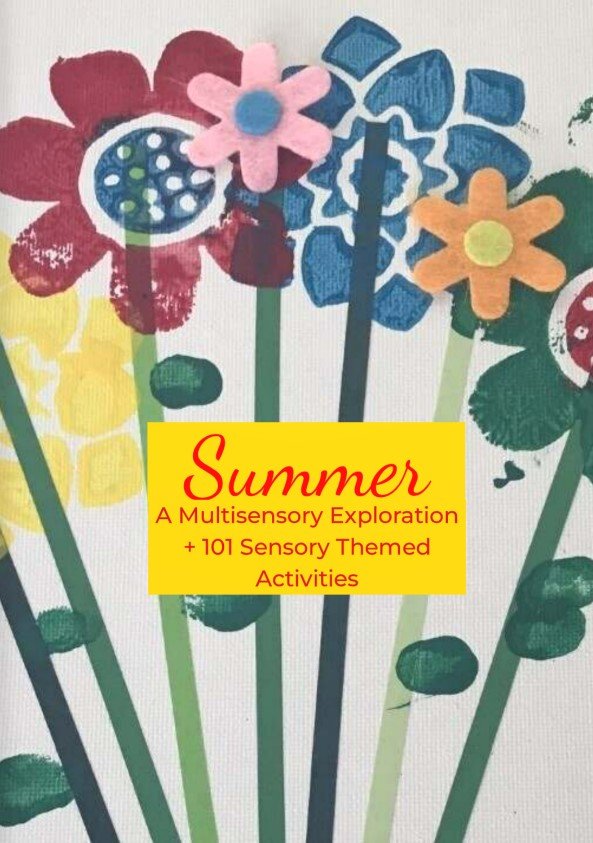
Suggested Resource
Summer – A Multisensory Exploration
I love the cover to this resource designed by Megan Dunwell (age 12) from Greater Manchester who won a competition to design the cover for ‘Summer – A Multisensory Exploration’
Megan made this picture at home with her lovely Mum.
The design was printed onto canvas.
The stems are ribbons.
Megan chose which flower and colour she wanted to use each time from choice of 2 different options.
The leaves are Megan’s fingerprints which added a personal touch.
‘Summer – A Multisensory Exploration’ is a bumper resource and includes 101 summer themed sensory extension.
‘The colours of summer are the bright yellow sun
That lights up the room when the day has begun
The deep blue hues of the sapphire sky
Streaks like white chalk where the planes have flown by.’
Table of Contents
- About the Artist
- The Benefits of Multisensory Storytelling
- How to Tell a Multisensory Story
- Story Props Checklist
- Summer Full Poem/Story
- Summer Senses
- Summer Nature
- Nature’s Art Room
- Independent Skills – Task Boxes
- Life Skills
- Summer Safety
- Bubbles & Sand Dough
- Summer Sounds
- Summer Role Play
- D & T Summer Food
- Understanding the World
- D & T
- The Summer Garden
- Outdoor Learning
- Pebble Painting
- Summer Maths
- Summer P.E
- Culture – Traditional Clothing
- Summer Festivals Around the World
- Summer Science
- Summer Plants & Life Cycles
- Butterflies
- Spotlight on…Hebden Green School
- Sensory Art ‘Sparrow’s sensory Sun’
- Sensory Art – ‘Barn Owls Summer Exploration’
- Sensory Art- ‘Starlings – We’re all Going on a Summer Holiday’
If you would like your school to feature in a teaching resource, get in touch!
You can message me via the website, through social media or send an email to rhymingmultisensorystories@outlook.com
Click on the image above to find out more.
Summer Task Boxes
Task boxes provide the materials and tools needed to complete a job or task.
They are easy to set up.
- Theme your box then place the items/tools required to complete the task.
- You have the option to add pictures in steps or written instructions.
- Always discuss how to use any tools safely and supervise the activity.
Plant Care Task Box

Plant Care Task Box
You will need:
- Bucket
- Hand fork
- Gardening gloves
- Watering can/jug
- Small container/compost bucket
- Place the items inside the bucket.
- Can the student remember to wear their gardening gloves and put them on independently?
- Can the student use the hand fork to dislodge weeds from a flower bed?
- Can the student use the watering can/jug to water plants/flowers?
- Can the student remove any dead leaves/flower heads from the plants and place in the compost bucket?
- Can the student communicate a request for ‘help’ if required?
Click on the image above to find out more.
Seed Planting Task Box

Seed Planting Task Box
You will need:
- Gloves
- Seeds (Nasturtiums, pick and eat salad, radish and sunflowers are fast growing)
- Potting compost
- Small pots or a seed tray
- Water & watering can
- Labels
- Can the student remember to wear their gardening gloves and put them on independently?
- Can the student read the instructions on the seeds and open the packets?
- Can the student plant the seeds to the requires depth then cover with soil?
- Can the student water the pots/seed tray?
- Can the student label their pots/tray?
- Can the student communicate a request for ‘help’ if required?
Click on the image above to find out more.
Bedding Plant Task Box

Bedding Plant Task Box
You will need:
- Gloves
- Trowel
- Tray of bedding plants (begonias, marigolds, pansies, petunia, salvia are easy to grow
- Water
- Watering can
- Can the student remember to wear their gardening gloves and put their gloves on independently?
- Can the student follow the instructions on the plant label and find a suitable place to place the plants (sunlight and soil) and take into consideration the spacing, how tall and wide the plants will grow?
- Can the student use the trowel to dig a hole?
- Can the student remove the plant from the tray and place into the hole?
- Can the student use fill the watering can with water and water the plant?
- Can the student communicate a request for ‘help’ if required?
Click on the image above to find out more.
Sensory Sun Activity

Sensory Sun Activity
Sparrows Class at Hebden Green School in Winsford, Cheshire, had great fun creating their Sensory Sun.
Sparrows Class Teacher Vicky-Ormerod Jordan tells us about the activity and explains how to re-create it.
‘The children participated in several multi-sensory activities linked to the sun, which all combined to make their final art piece. The process took a number of sessions which spanned across one full week.’
To re-create the activities
You will need
- Large yellow or orange scrunchy elastic band or ribbons
- Oranges and lemons
- Yellow flowers or leaves
- Torch
- Yellow/orange/white paint
- Paper
Activity 1: The Stretchy Band
‘The children held onto a giant yellow stretchy band and participated in songs linked to the sun and summer. Our favourite song was ‘The Sun has Got His Hat On’ but we also enjoy singing ‘You are my Sunshine’ and ‘Sunshine in my Heart.’ The children lifted the band up, down and side to side and rocked forward and back to the music, focusing on their vestibular sense. We also played Vivaldi’s ‘Summer’ from The Four Seasons and moved rhythmically to the music, pinging the band like a violin. We then placed the stretchy band into a circular shape to be the centre of our sun.’
Activity 2 Sunlight Superstars
‘We explored how the sun provides light so living things survive by shining a torch on various parts of our bodies.
We shined the torch on our hands, arms, legs and chin, (being careful not to shine it in our eyes). The children used photos/symbols of body parts to choose where they would like the torch to shine next.
Activity 3: Let’s get Messy- The Sun’s Rays
‘To make the sun’s rays, the class chose to use either their hands or their feet. We mixed white and yellow together to make different shades of yellow and also had orange paint available. The children chose their preferred paint colour and made splats with their hands, feet or both! Some pupils preferred to cut out their handprint and use a paintbrush instead, developing fine motor skills. After letting the paint dry, we arranged the hand and footprints to look like rays of sunshine coming out from the centre of our sun.’
Sparrows Class Hebden Green School
Activity 4: Oranges and Lemons
‘We sang the rhyme ‘Oranges and Lemons’ and then supported the children to use their senses, focusing on touch, smell and taste. The children rolled the oranges and lemons, and we touched their bumpy, cold skin. We then chopped the oranges and lemons and spent time exploring the smell, touch and taste. The fruit was then placed into the centre of our sun, making a circle. We even added yellow tennis balls as a nod to Wimbledon!’
Thank you to Class Teacher Vicky Ormerod-Jordan and to her wonderful team: Nicky, Ann & Alice and last, but definitely not least, the stars of the show, the students of Sparrows Class!
Click on the image above to find out more.
June 29th - July 19th | Children's Art Week

What better way to celebrate art than by entering my competition.
Design a book cover for my new release ‘Water – A Multisensory Exploration’
How to Enter
Using any medium, produce a piece of artwork with the topic of ‘Water’
I would love to see your water themed artwork and any water themed activities your child/ student(s), class would like to showcase. This is a wide topic and can cover anything from the seas, oceans, rivers, the weather, climate, water sensory based activities…anything with a water theme.
A4 Portrait only please. You do not need to write the title on the artwork, please do not write any names of the students on the artwork.
Email your artwork to rhymingmultisensorystories@outlook.com
Please include in your email the first name of the artist, the name of the school and a contact name. (Home-schooled students welcome)
Competition Rules:
- There is no age limit.
- You may submit as many entries as you like.
- The closing date is midnight 1st June 2023
- Your data will be protected according to law and will not be shared with any other parties. All emails and their contents (including the artwork) will be deleted after the winner is drawn on 1st June 2023
- The winner will have their artwork featured on the new release ‘Water – A Multisensory Story’ and receive a prize!
- There will be 20-runner up prizes who will win a multisensory story of their choice. The stories are in the format of a digital download and can be printed out and shared throughout your school/setting in multiple classrooms.
Good Luck!
22nd April | National Jelly Bean Day
Jelly Bean Activities

Jelly Bean Activities
Can the students guess the flavour of the jellybean? (To make this easier offer a choice of two possible flavours)
Can the students use adjectives to describe the flavour: bitter, buttery, citrus, floral, fresh, fruity, grapey, lemony, limey, refreshing, sour, sweet, syrupy, tangy, tart, toasty, vanilla, zesty, zingy?
Can other students guess the flavour by the description?
(Be aware of allergies and choking hazards)
Click on the image above to find out more.
28th April | National Superhero Day
A day to honour all superheroes, both fictional and real.
Suggested Resource: Superheroes – A Multisensory Adventure

Superheroes - A Multisensory Adventure
Download Superheroes – A Multisensory Adventure Resource
Explore superheroes as our student takes you through his school day with this multisensory adventure.
Table of contents:
- Introduction
- Story Props Checklist
- How to Tell a Multisensory Story
- Superheroes Full Story
- Superheroes Fully Resourced,
- Rhyming Multisensory Story
- Objects of Reference
- Classroom Superheroes
- Speech & Language Activities
- Superhero Science
- Superhero Superpowers
- Superhero Self-Portraits
- Superhero Superfoods
- Superhero Ideas & Inspiration
Click on the image above to find out more.
Explore Superhero Superpowers

Explore Superhero Superpowers
Balance Like Spiderman
- Balance on a beam or walk along a chalk line without going over the edge!
- Balance on a peanut ball, balance board or air cushion
- Climb on a climbing/traverse wall, ‘tripwire’ or ‘jungle gym’
- Ride a bike, trike, go-cart, scooter or a horse
- Jump on a trampoline
- Play ball games
- Roller-skate, ice-skate or ride skateboard
- Walk on ‘skis’, ‘stilts’, ‘mini hops’, ‘stompers’ or ‘giant foam feet’
See like Batman
- Study items through a microscope or magnifying glass.
- Watch patterns and colours move in a kaleidoscope.
- Change the view by wearing coloured glasses or looking through coloured film
or Perspex. - Look at items from a distance through binoculars.
- Stimulate sight by experimenting with familiar, and providing new, visual
experiences. - Track and locate moving stimuli such as light from torches and watching the
movement of spinning tops, fidget spinners, spinning hand held lights, bubbles or the wax in lava lamps. - Explore colour hues, shiny, bright, brilliant, cloudy, colourful, dark, dim, dull, ickering, fuzzy, gleaming, glistening, glowing, hazy, sparkly, shadowy, pale, rippling, shimmering, shiny, translucent.
Click on the image above to find out more.
Invisible Writing
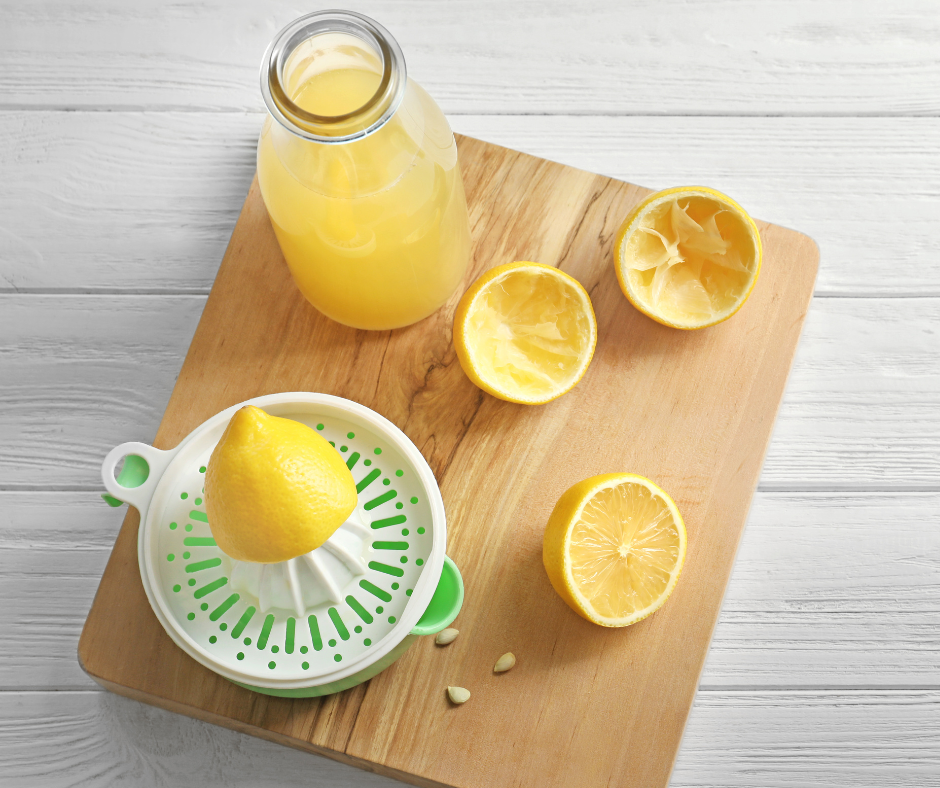
Invisible Writing
You Will Need:
Paper, Lemon Juice, Cotton Bud, Hairdryer
Method:
Use the lemon juice as ink and the cotton bud as a writing/drawing tool to write a message or draw a picture. Dry
with a hairdryer to reveal your message!
The Science Bit!
The water from the lemon juice evaporates leaving the citric acid which reacts with the paper damaging it. When
heated with the hairdryer these areas of the paper burn quicker revealing your message!
Alternative Activity:
Write or draw on paper or card using a white candle then paint over the writing using watercolour or watered
down food colouring to reveal your message or drawing!
Click on the image above to find out more.
29th April | World Zipper Day
A day to be grateful for those little inventions that make a big difference to our lives and an opportunity to promote fine motor skills.
Explore Fastenings:
Buckles, Buttons, Cuff Links, Eyelets, Magnetic Clasps, Metal Hook & Eye, Shoelaces, Sliders, Snap Hooks, Toggles, Velcro, Zips.
Other Useful Resources for April
Spring – A Multisensory Exploration
Click on the image above to find out more.
Competition Time!
Design a cover for ‘The King’s Coronation – A Multisensory Exploration’
How to Enter:
- Using any medium, create a piece of artwork. This can be a portrait of King Charles III or any other artwork with a Coronation theme.
- A4 Portrait only please.
- You do not need to write the title on the artwork, please do not write any names of the students on the artwork.
- email your artwork to rhymingmultisensorystories@outlook.com
Competition Rules:
- There is no age limit.
- You may submit as many entries as you like.
- The closing date is midnight 20.04.23
- Your data will be protected according to law and will not be shared with any other parties. All emails and their contents (including the artwork) will be deleted after the winner is drawn on 20.04.23 (for more information on Privacy Policy visit the website or get in touch.)
There are prizes to be won!
Good Luck!
Training (1-1, Groups & INSET)
‘An Introduction to Multisensory Storytelling’ Course
- 1-1 £45
- Groups (Enquire for a price)
- INSET £250
Contact rhymingmultisensorystories@outlook.com
FAQ
Who is the Course Aimed at?
SEN Teachers, SENCOs, HLTA’s, TA’s, Mainstream Early Years Educators, Speech Therapists, Play Therapists, Parents, Guardians, Childminders, Carers, Support Workers, Activity Coordinators, Librarians, and anyone with an interest in exploring storytelling through the senses.
Course Content
The benefits of multisensory storytelling.
- Sourcing story props.
- Sound effects.
- How to tell a multisensory story.
- Adapting an existing story into a multisensory story.
- Incorporating extension activities into your session.
- Using the story props as a tool for individuals to explore & express their likes, dislikes and sensory preferences.
- Extension Activities
In addition to this we will explore a multisensory story in depth, how to deliver this story and how to use the story props promote communication and areas learning.
The current theme is ‘Spring – A Multisensory Exploration’
How is the Training Delivered?
The training is delivered as a friendly and informal session via Zoom and can be tailored to meet your training requirements.
How Much Does the Course Cost?
£45 1-1 Training Session
£250 Whole School/Setting INSET
(For smaller group bookings please enquire for a price)
Book a course and receive a FREE 6-month subscription to the Members Library!
(Offer applies to bookings over £200)
Contact rhymingmultisensorystories@outlook.com
Course Length
1hour 45 mins plus Q & A.
Will I Receive any Course Notes?
Yes. Course summary notes will be sent as a word document.
Are There Any Other Free Resources Included?
Yes
You will receive a free digital download of ‘Listen – An A-Z of Sensory Ideas to Stimulate the Auditory System’
This comprehensive guide explores fun and engaging sensory ways of stimulating the sense of hearing. The A-Z of sounds is divided into the following categories: Animals, Transport, Musical Instruments & Home. It also includes fun, motivating sensory themed extension activities. This resource is suitable for working with curious pre-schoolers to teenagers with complex needs.
You will also receive a free digital download of the focus story.
How Do I Book?
email rhymingmultisensorystories@outlook.com or send a message via the chat feature on the website or through social media
How Do I Pay?
Payment is accepted through BACS or Cheque.
I am a School/Company/Setting, can you send an Invoice?
Yes. Rhyming Multisensory Stories is fully registered with HMRC and can invoice.
Will I Receive a Certificate?
Yes. You will receive a digital certificate of completion
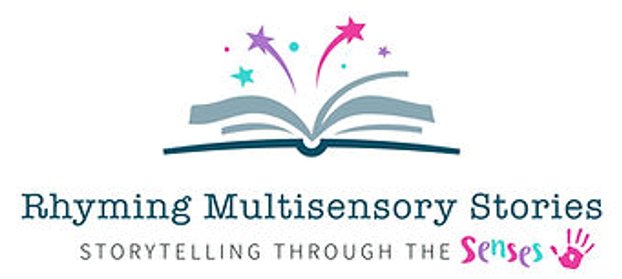
Get in Touch!
Your questions, queries, comments & feedback are always welcome!
email: rhymingmultisensorystories@outlook.com
Website: www.rhymingmultisensorystories.com
Facebook Page: Rhyming Multisensory Stories
Facebook: Victoria Navin RMSS
LinkedIn: Victoria Navin Rhyming Multisensory Stories
Twitter: @RhymingStories
Instagram: rhyming_multisensory_stories
MySpace: Rhyming Multisensory Stories
Tumblr: rhymingmultisensorystories
Reddit: sensorystories
Pinterest: Rhyming Multisensory Stories
YouTube: Rhyming Multisensory Stories
Health and Safety
Advice and Disclaimer

Advice and Disclaimer
Health & Safety Advice & Disclaimer
- The author has used their best efforts in preparing the information on this website and makes no representation or warranties with respect to the accuracy, applicability, fitness or completeness to the contents.
- The information is for pleasure purposes only.
- If you wish to apply any ideas and activities contained in this blog, on the website or in any of the multisensory stories or resources, you are wholly responsible and take full responsibility for your actions.
- The activities are designed to be led and supervised by a responsible adult at all times.
A Note on Allergies/Intolerances
- If you have any doubts regarding any activity or prop used, then seek advice before starting.
- Be aware of potential choking hazards.
- Check the ingredients in any items you may be using for any potential food or skin allergies or respiratory reactions. If you see any signs of redness, swelling or other symptoms of a suspected reaction seek immediate medical advice.
- The interactions should be led by the sensory explorer who should be allowed to participate without expectation.
- Never force stimuli and stop the activity if the story explorer shows signs that they are not enjoying the session.
Click on the image above to find out more.

